
|
|
|
Two weekends ago, I made my way to the annual Cutlery Festival held in Seki City in central Gifu Prefecture, so here are some of the highlights of what I saw there!
Dozens of ayu (sweetfish) being grilled greeted me as I arrived, the salt balancing their natural sweetness as is customary here in Gifu! I really regret not buying one of these... 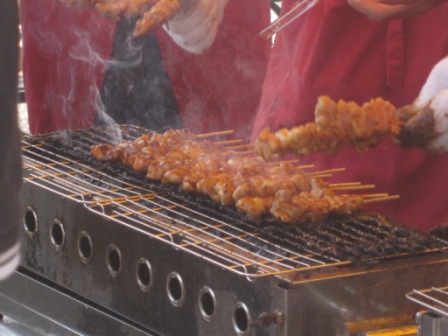 There was also delicious yakitori, or grilled chicken on skewers, which comprised a part of my lunch! It was tender and tasty and as good as it looks here! It's hard not to love the food stalls at Japanese festivals! 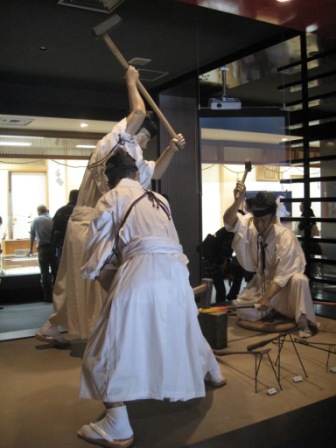 These are the figures that greet you as you enter the Seki Sword Tradition Museum, a place that details the sword-making process, displays many gorgeous Japanese swords as well as other blades made in the famous city of Seki, and offers-during the Cutlery Festival as well as at other times-live demonstrations of the different stages of sword-forging. 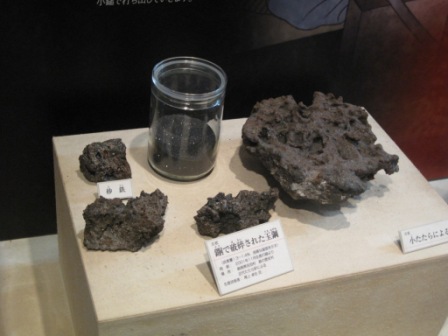 Some of the raw materials that are eventually made into the hard, steel blade of the sword. "Iron sand" is combined with some copper and other metals to eventually form the final metal that is used in the forging process. 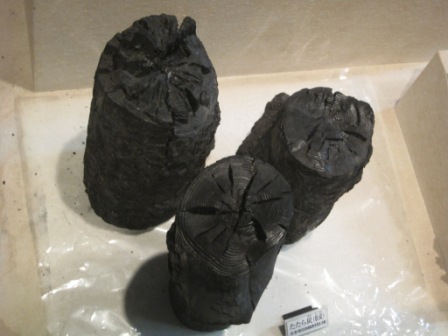 Learning to make fine charcoal flakes-used to cover the metal and allow for it to be uniformly molded-from burnt wood like this takes much skill and time to master, and this ability is one thing that is required before one can be licensed as a swordsmith. 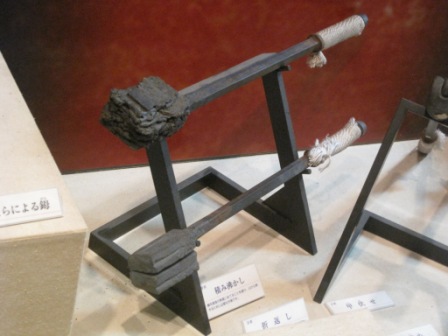 Pieces of metal are melded together onto these rods, at which point they are tempered, elongated, and folded back against themselves, which results in what you see at the end of the bottom rod. This process is repeated over and over. And over. And this layering is what gives the steel much of its strength. 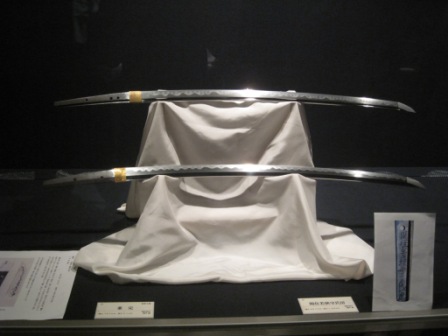 Two of the swords on display at the museum. Simply stunning works of art. Notice the pattern on the edge of the blade...this pattern can vary drastically depending on the swordsmith and the exact process he uses to temper the steel. 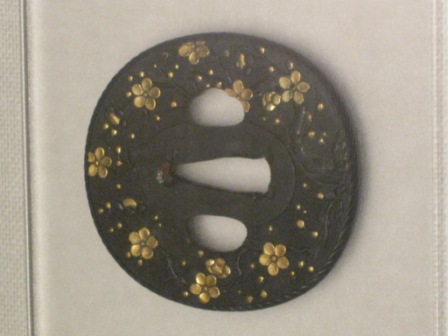 A tsuba, or sword guard, on display with beautiful decoration. This is located just above the sword's hilt, when attached. 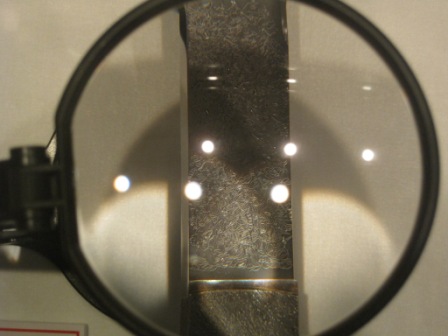 Some swords have blades that are intricately designed, as you can see here under the magnifying glass. 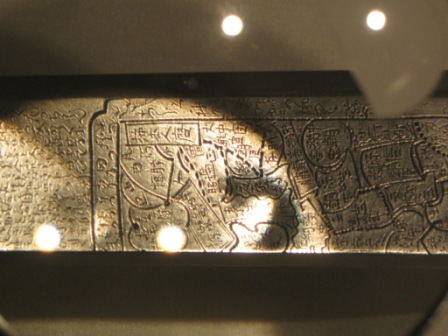 More intricate blade designs...this one is actual writing, which is easily made-out at this magnification. This design runs up and down the entire blade! 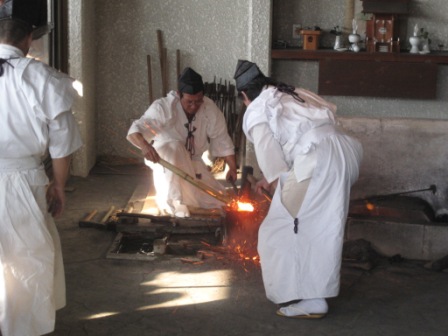 Outside the museum, there was a metal forging demonstration, which involved four swordsmiths, each with his own specialized role. Seeing the sparks flying in all directions upon each hit of the hammer never fails to leave a deep impression. 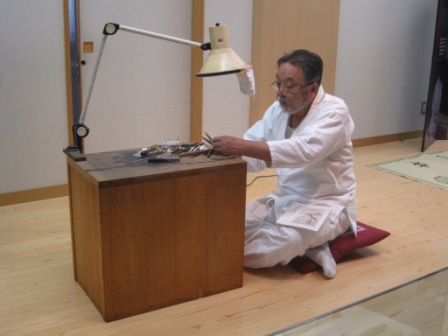 Inside the museum, four craftsman were demonstrating different operations involved in the sword-making process. This first craftsman, called a "tsukamak-ishi" or "hilt maker," is expertly weaving the threads, making the standardized yet very distinctive pattern that adorns the handles of Japanese swords. 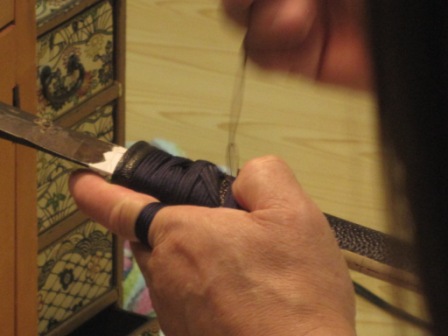 A close-up of the hilt maker at work. 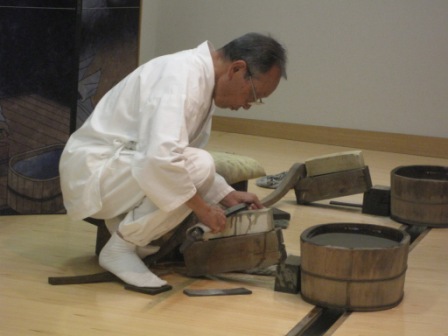
Next is the "togi-shi," or "polisher," who drips a faint amount of water on the blade and then scrapes it against these blocks repeatedly. The edge is not yet sharp, so there's no need to worry about him injuring himself holding the blade this way!
Then we have the "saya-shi," or the sheath maker, who we see here shaving what will be the inside of the scabbard/sheath so that the blade fits perfectly like a figure into the mold from which it was made.
Lastly, there was the "shirogane-shi," or decorative part maker, who we see here making the "habaki," the piece of metal located above the guard that serves the dual function of preventing the guard from falling off and keeping the sword firmly in the scabbard when it is sheathed.
Reportedly the largest katana (Japanese sword) in the world!
Some of the other types of blades made in Seki that were on display at the museum included these unbelievably thick, multi-functional Swiss army knives! Which would certainly not fit in any kind of pocket...
Elsewhere, there were sword unsheathing and sword cutting demonstrations, as seen here. Just about to being his swing...
...And mid-swing as he slices the target cleanly in half!
The next demonstrator about to slice through a collection of targets as part of an "obstacle course" that he had set-up.
Then I finally arrived at the street buzzing with the stalls I expected to see at a Japanese festival!
While some stands were selling food, others, like this one, were selling blades of all kinds, shapes, and sizes! People came from around the country to buy the highest-quality kitchen knives at greatly reduced prices! ...And I personally came away from the festival with a (replica) katana in hand! お気に入りの記事を「いいね!」で応援しよう
[Festival & Event Series] カテゴリの最新記事
|